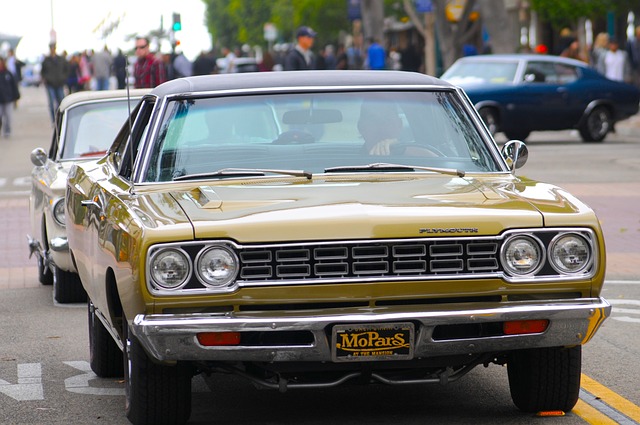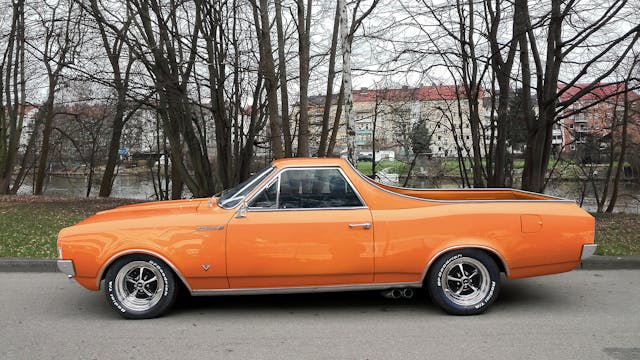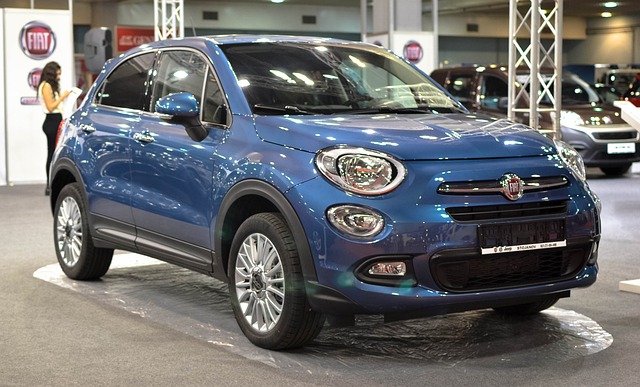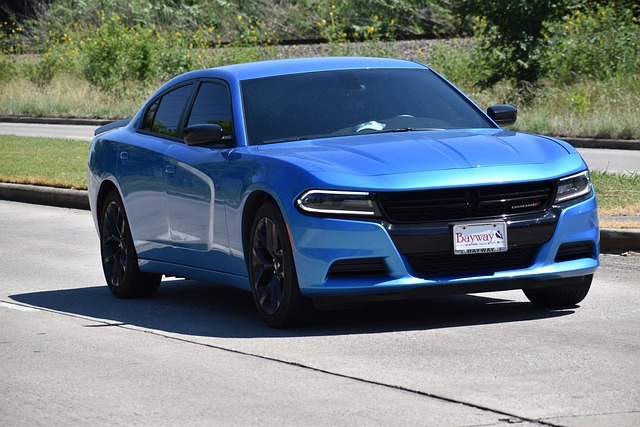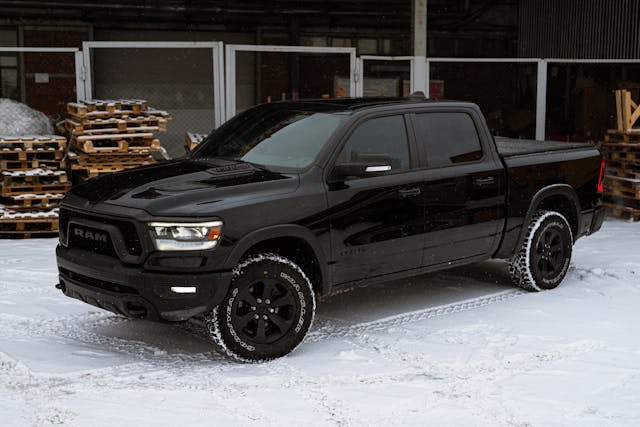1968 Dodge Charger Hemi.
Last year, we praised Plymouth for producing what we considered was the best-looking Detroit vehicle of 1967, the Barracuda. A remarkable feat given the Chrysler Corporation’s odd, unstable styling history, which, since the Airflow, has been marked by committee-styled cars that, in addition to lacking design integrity, have oscillated between being far out to the point of vulgarity and being timid to the point of sterility—a seemingly endless series of over-compensations for each preceding year. With this backdrop, we were pleasantly delighted by the ’67 Barracuda, but we were fully prepared to wait years before Chrysler produced a credible replacement. We imagined designers and stylists sitting about their desks, exhausted from their Barracuda efforts and unable to develop even a new bumper for 1968.
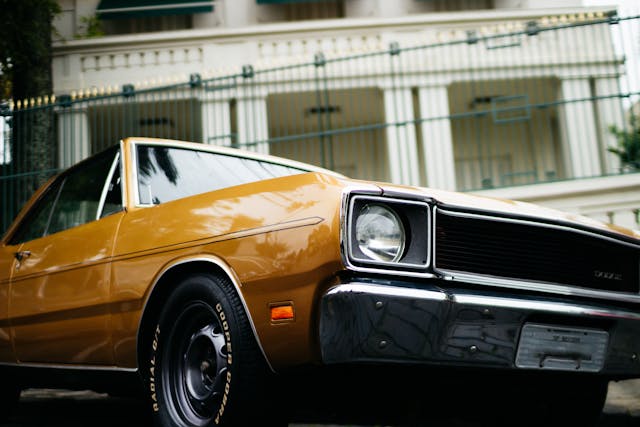
Imagine our delighted surprise when we saw Dodge’s new Charger. Working with Chrysler Corporation’s 117-inch wheelbase “B” series body/chassis, the designers we thought were worn out accomplished much more than a face-lift; they comfortably exceeded the bar of perfection established less than a year before.
The only 1968 automobile that comes close to challenging the new Charger for style awards is the new Corvette, which looks surprisingly similar to the Charger, especially from the back quarter. But we award the accolades to the Charger for a variety of reasons. First, since the Corvette is a smaller vehicle in terms of seating capacity and wheelbase, it is considerably simpler to project the required sporty image. Second, Dodge stylists have shown that they can produce a vehicle in the present idiom that is unique, combining exactly the appropriate degree of stylish conformance with the uniqueness and freshness that draws attention. In Dodge’s position as the smaller division of the number three automaker, originality is difficult to come by, but the Charger’s aerodynamic wedge theme is not only distinct, but also very similar to the new breed of wind-tunnel tested sports/racing cars that are just now making their debut in the 1967 Can-Am series. Third, although the Charger is a significant advance over its predecessor, the 1968 Corvette falls short of the Mako Shark display vehicles that came before it.

Chrysler Corporation is now fully committed to the vehicle industry. The previous Charger (a Coronet with a fastback top) and Barracuda were reminders of the Corporation’s financial crisis in the early 1960s. However, Lynn Townsend’s belt-tightening methods, along with his relentless efforts to enhance and expand the Corporation’s production facilities, seem to be paying off. Townsend has been Chrysler’s CEO since 1961 and more recently Board Chairman. The 1967 Barracuda and the new Charger, both with their own unique sheet metal now, demonstrate Chrysler’s growing strength and ability to tackle the financial and creative challenges of the specialty car era.
Specialty automobiles are designed with a fundamentally different planning philosophy than the bread-and-butter cars that Detroit used to manufacture solely. Bread-and-butter automobiles are designed with the sole goal of alienating no prospective buyers, making them generally featureless and uninteresting. In contrast, specialty automobiles are designed to appeal to certain groups of clients. We appreciate the more positive mentality behind the specialty vehicle, and the Charger has plenty of features that will appeal to performance enthusiasts.
The Charger’s aerodynamic appearance (according to Chrysler’s engineers, it is as aerodynamically slippery as it seems) is enhanced by a rear spoiler paired with a truncated rear end for a Kamm effect—a design technique that has become nearly obligatory in current racing vehicles. The Charger adopts the nose-down look of NASCAR and NHRA, and the bulging rear fenders should handle drag and stock car racing tires with little alteration. The greenhouse follows the strongly curved side glass and slants steeply towards the center of the vehicle, resembling Le Mans Ferraris, especially when seen from the back. A tunnel-type backlight is employed instead of a pure fastback (a stylistic characteristic that is quickly becoming out of favor due to overuse). The tunnel roof’s smaller rear window also causes less distortion in rear vision than a sharply sloped fastback window.
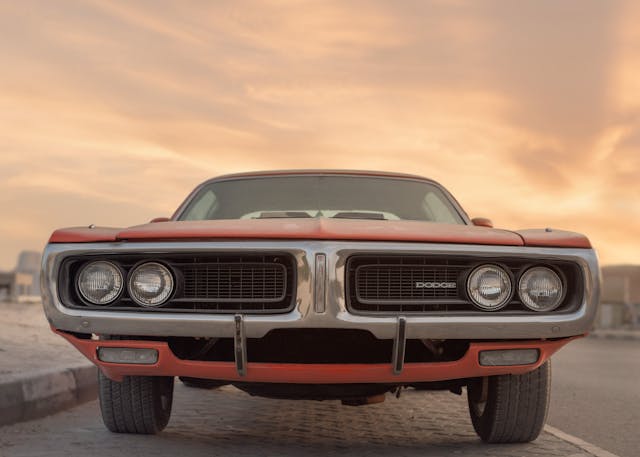
A racing-style gas filling cap set high on the left rear quarter provides further visual performance character, as do pseudo fog/driving/parking and turn signal lights mounted low in the front bumper. Matte black paint is utilized extensively on the grille and around the taillights. The Charger’s visual “in” characteristics include full wheel cut-outs, big tires on 6-inch rims, and replicated engine compartment exhaust vents in the hood (which also house turn signal indication lights, like the Mustang GT) and at the leading edge of the doors.
FAQ
What engine powers a 1968 Dodge Charger?
The standard engine was a 230-horsepower, two-barrel carburetor 5.2-liter 318-cubic-inch V8 with traditional “wedge” combustion chambers. A 290-horsepower two-barrel or 330-horsepower version of the 6.2-liter, 383-cubic-inch engine was offered as an option.
Is the Dodge Challenger a safe vehicle?
The IIHS’s safety tests show that other automobiles on the market are safer and more dependable. Meanwhile, the NHTSA has given the 2022 Dodge Challenger a five-star overall safety rating. It performed exceedingly well in most tests, including all side impact and passenger side testing.
Are challengers fuel-efficient?
How far can the 2021 Dodge Challenger go on one tank of gas? The base SXT trim level of the 2021 Dodge Challenger has a driving range of 425 miles. Looking at the fuel consumption of the basic Challenger model, you’ll get 19 mpg in the city, 30 mpg on the highway, and 23 mpg combined.

